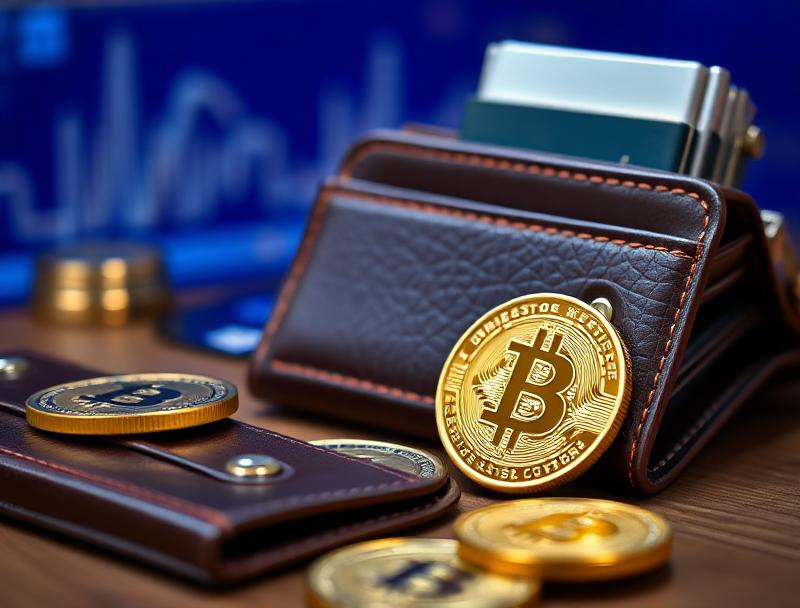Start by selecting a wallet that supports transactions with cryptocurrencies accepted by the merchants you plan to transact with. Wallets like MetaMask, Trust Wallet, or hardware options such as Ledger provide secure and user-friendly interfaces for sending and receiving tokens.
Next, confirm the acceptance of digital assets at your desired point of sale. Many online stores and physical retailers now allow spending via Bitcoin, Ethereum, or stablecoins. Checking compatibility beforehand avoids transaction failures and ensures smooth real-world usage.
When ready to complete a purchase, generate a payment request or scan the merchant’s QR code within your wallet app. Review the transaction details carefully–amount, fees, and destination address–then authorize the transfer. Transactions typically finalize within minutes depending on network congestion.
Understanding transaction fees and confirmation times is critical for reliable everyday spending. Using networks with lower costs or layer-2 solutions can reduce expenses and speed up payments without sacrificing security.
Integrating cryptocurrency into daily financial activities requires familiarity with both technical tools and real-life acceptance points worldwide. By following these practical steps, anyone can confidently convert digital holdings into actual goods and services.
How to Use Crypto for Payments
To spend cryptocurrencies in real-world transactions, it is necessary first to select a wallet that supports the desired digital assets and provides secure transaction capabilities. Wallets can be software-based (mobile or desktop apps) or hardware devices offering offline storage. Once set up, sending funds involves scanning a merchant’s payment QR code or entering their wallet address, then confirming the transaction amount and network fees. The speed of confirmation depends on blockchain protocol specifics; for example, Bitcoin transactions typically require several confirmations over 10 minutes, while Ethereum-based tokens often finalize within seconds.
Merchant acceptance of cryptocurrency varies widely by region and industry. Some vendors directly accept stablecoins like USDC or USDT to minimize volatility risks, while others prefer major coins such as Bitcoin or Ethereum. Payment processors like BitPay and CoinGate facilitate integration by converting received cryptocurrencies into fiat currencies instantly if needed, providing merchants with flexibility without losing access to blockchain payments advantages. This infrastructure makes spending digital currencies increasingly practical for everyday purchases from online retailers to physical stores.
Technical Aspects of Spending Digital Assets
Understanding transaction mechanics is critical when conducting blockchain transfers. Each transfer requires paying a network fee, which compensates miners or validators for processing transactions. Fees fluctuate based on network congestion; higher activity typically leads to increased costs and slower confirmation times during peak periods. For instance, the Ethereum network’s gas fees can spike dramatically under heavy use due to its proof-of-work consensus model until full transition to proof-of-stake reduces this pressure.
The security model relies on cryptographic signatures ensuring that only the holder of the private key associated with an address can authorize spending from that account. Users must safeguard private keys carefully since loss means permanent inability to recover funds. Multi-signature wallets provide enhanced safety by requiring multiple approvals before releasing funds, making them suitable for both individual users concerned about theft and organizations managing shared assets.
Real-World Examples of Merchant Acceptance
- Overstock: One of the earliest large retailers accepting Bitcoin payments through third-party processors.
- Newegg: Electronics e-commerce platform supporting cryptocurrencies including Bitcoin and Litecoin directly at checkout.
- Travel Agencies: Some companies allow booking flights and hotels paid via cryptocurrency using services like Travala.com.
This growing list demonstrates practical adoption scenarios beyond speculative trading, allowing holders of digital currencies to spend them similarly to conventional money while benefiting from blockchain transparency and security features.
Navigating Volatility When Making Transactions
The inherent price volatility presents challenges during spending because value can significantly shift between initiating a payment and its confirmation on-chain. Stablecoins mitigate this risk by pegging their value to fiat currency equivalents; therefore, they are often preferred when immediate settlement is essential for merchants aiming to avoid losses due to market fluctuations.
Alternatively, some platforms provide instant conversion services that automatically exchange received cryptocurrencies into local currencies upon payment receipt. This service eases merchants’ concerns about holding volatile assets while still expanding customer base through acceptance diversity.
User Recommendations for Confident Transactions
Select wallets supporting multi-factor authentication alongside encryption protocols protecting private keys against unauthorized access. Verify compatibility with popular networks such as Bitcoin (BTC), Ethereum (ETH), or Binance Smart Chain (BSC) depending on where merchants operate. Before completing any purchase, double-check recipient addresses manually or via QR codes since blockchain transactions cannot be reversed once confirmed.
If unfamiliar with direct transfers, experimenting initially with small-value transactions helps build trust in operational steps involved without risking significant funds. Awareness of current network fee levels also enables timing payments efficiently–low congestion periods generally correspond with reduced charges and faster processing speeds, optimizing overall spending experience through blockchains worldwide.
Choosing a Crypto Wallet
Selecting the appropriate wallet is fundamental for managing digital assets securely and efficiently. Prioritize wallets that provide robust private key control, as this ensures true ownership of funds and minimizes risks associated with third-party custody. Hardware wallets like Ledger or Trezor offer enhanced protection through offline key storage, reducing exposure to online threats common in software-based alternatives.
When considering acceptance by merchants globally, compatibility with widespread protocols such as SegWit or Lightning Network significantly improves transaction speed and lowers fees. Mobile wallets like Trust Wallet or MetaMask integrate these technologies, facilitating seamless spending at real-world points of sale while maintaining user-friendly interfaces for everyday transactions.
Technical Factors Impacting Wallet Choice
Evaluate wallet interoperability with multiple blockchain networks if your assets span beyond Bitcoin or Ethereum. Multi-currency support broadens flexibility in spending across different merchant ecosystems worldwide. For instance, Exodus supports over 100 tokens and incorporates exchange features within the wallet, enabling users to convert assets without external platforms, which enhances convenience during real-time payments.
Security mechanisms such as two-factor authentication (2FA), biometric locks, and encrypted seed phrases play vital roles in safeguarding funds against unauthorized access. Software wallets like Atomic Wallet implement end-to-end encryption combined with optional biometric verification on smartphones, balancing security needs with ease of use during daily expenditures.
- Custodial vs. Non-custodial: Custodial wallets offer simpler recovery processes but require trust in third parties; non-custodial wallets provide full control yet demand careful backup management.
- Transaction Speed and Fees: Wallets supporting Layer 2 solutions reduce network congestion impact, enabling faster confirmations critical for merchant acceptance.
- User Experience: Intuitive interfaces encourage consistent usage and reduce errors during sending or receiving tokens.
The choice ultimately depends on individual priorities: whether maximum security or rapid usability takes precedence during real-world spending scenarios. Many users adopt a hybrid approach–storing bulk funds offline while keeping smaller amounts readily available through mobile apps tailored for point-of-sale transactions accepted by merchants internationally.
If you’re beginning your journey with digital currencies, consider starting with widely adopted mobile wallets that offer clear backup instructions and active community support forums. This setup helps build confidence while navigating transaction workflows safely around the globe’s growing acceptance network.
Buying Cryptocurrency Safely
Prioritize selecting established exchanges with strong security protocols when acquiring digital assets. Platforms that implement two-factor authentication (2FA), cold storage solutions, and rigorous identity verification reduce the risk of theft and fraud. For instance, Coinbase and Kraken maintain insurance policies covering certain losses, offering an additional safety net for users engaging in purchasing transactions.
Understanding wallet options is critical to preserving your holdings after acquisition. Hardware wallets like Ledger or Trezor provide offline key management, significantly minimizing exposure to hacking attempts. In contrast, software wallets connected to the internet are more vulnerable but offer convenience for frequent spending at merchants accepting cryptocurrencies as a payment method.
Verification and Transaction Transparency
Confirming the legitimacy of trading platforms involves reviewing their compliance with financial regulations such as Anti-Money Laundering (AML) and Know Your Customer (KYC) policies. These measures ensure real identities back every transaction, fostering trust between buyers and sellers across borders. Blockchain explorers further allow users to verify transaction histories publicly, enhancing transparency in the process of converting fiat currency into tokens.
When considering operational details, it is advisable to start with small purchases to test system reliability before committing larger sums. Additionally, be aware of network fees that vary depending on blockchain congestion; Ethereum gas fees can spike dramatically during peak activity periods, affecting total costs. Educating oneself about these dynamics enables smoother integration of digital currencies into everyday spending routines worldwide.
Making Payments with Crypto
To begin spending digital currencies in real-world transactions, one must first identify merchants and service providers who have enabled acceptance of these assets. Globally, the number of businesses integrating blockchain-based payment systems is steadily growing, supported by platforms such as BitPay, Coinbase Commerce, and Binance Pay. These services facilitate seamless conversion and transaction processing, allowing users to transact with stablecoins or major cryptocurrencies without facing volatility during checkout.
Understanding the technical process behind sending funds involves familiarity with wallet software and network confirmations. When initiating a transfer, users broadcast a signed transaction from their private key through the blockchain network. Depending on the underlying protocol–such as Bitcoin’s proof-of-work or Ethereum’s proof-of-stake consensus–confirmation times can range from seconds to several minutes. Choosing appropriate fee levels ensures timely inclusion in blocks without overpaying for miners’ or validators’ incentives.
Practical Steps to Execute Transactions
Here is a simplified sequence for conducting an on-chain transfer that results in successful spending:
- Select a compatible digital wallet supporting the desired asset.
- Obtain the recipient’s public address (merchant or peer).
- Enter amount and confirm fees suggested by the wallet interface.
- Sign the transaction using your private key within the wallet application.
- Broadcast it to the network and wait for confirmation(s) based on required security levels.
- Verify receipt of funds on merchant’s side before finalizing any order.
The degree of merchant acceptance varies significantly worldwide. Countries like El Salvador have embraced national-level integration, whereas others exhibit cautious regulatory stances that impact adoption rates. Nevertheless, sectors including travel, luxury goods, and online gaming show notable willingness to accept decentralized tokens due to their borderless nature and reduced dependence on traditional banking rails.
A critical consideration in everyday utilization is transaction speed and cost efficiency. Layer-2 solutions such as Lightning Network (Bitcoin) or rollups (Ethereum) offer accelerated settlement times and drastically lower fees compared to base-layer transactions. This enhancement encourages micro-payments and frequent small-value purchases that would be impractical with legacy blockchain mechanisms alone.
Security practices should never be overlooked when transferring value digitally. Employing hardware wallets for private key storage minimizes exposure to phishing attacks or malware threats commonly targeting software wallets connected directly to internet environments. Additionally, verifying merchant authenticity through trusted directories or user reviews helps avoid potential fraud attempts during commercial exchanges involving cryptocurrency instruments.
Understanding Transaction Fees
Transaction fees are a fundamental aspect of transferring value across decentralized networks globally. These fees compensate miners or validators who process and confirm transactions, ensuring security and integrity within the blockchain ecosystem. When spending digital assets for goods or services, users often encounter variable costs depending on network congestion, transaction size, and urgency. For merchants accepting such transfers as a form of real-world compensation, understanding fee structures is critical to maintaining profitability and smooth operational flow.
The mechanism behind these fees involves complex prioritization algorithms that determine the order in which transactions are recorded on the blockchain. Networks like Bitcoin calculate fees based on data size measured in bytes; larger transactions require higher payments to incentivize quicker inclusion in blocks. Conversely, Ethereum uses “gas” units priced by market demand to allocate computational resources for executing smart contracts or simple transfers. This dynamic pricing model impacts how consumers plan their spending and influences merchant acceptance policies worldwide.
Factors Influencing Fee Variability
Several technical parameters influence fee amounts during transfers:
- Network Traffic: High transaction volumes increase competition, pushing fees upward as users bid for faster processing times.
- Transaction Complexity: Operations involving multiple inputs or smart contract interactions consume more resources, leading to higher costs compared to straightforward fund transfers.
- User Preferences: Wallet interfaces often allow setting custom fees; paying lower rates can delay confirmation, affecting real-time spending capabilities.
This variability compels both payers and merchants to evaluate timing and fee strategies carefully when integrating decentralized solutions into payment systems around the world.
Practical Examples from Merchant Adoption
An illustrative case is Shopify’s integration with blockchain payment providers where merchants face fluctuating transaction fees impacting retail pricing models. Some vendors choose batching multiple payments into single transactions to minimize cumulative expenses. Another example is remittance services that optimize fee expenditure through layer-two scaling solutions like Lightning Network on Bitcoin or rollups on Ethereum, enabling microtransactions with negligible charges while preserving security standards.
By analyzing these methods, businesses gain insights into balancing customer convenience against operational cost efficiency when accepting non-traditional forms of electronic settlements globally.
Recommendations for Real-World Application
- Monitor network conditions regularly: Use analytics tools providing real-time fee estimates before initiating transfers to select optimal timing.
- Educate customers about fee implications: Transparent communication regarding potential delays or additional costs helps set realistic expectations during checkout processes.
- Leverage second-layer protocols: Adopt scalable technologies reducing base-layer load and thus decreasing overall transaction expenditure without compromising security.
The effective management of transactional costs fosters broader acceptance among both spenders and sellers by enhancing predictability and affordability in daily commercial activities worldwide.
The Future Outlook on Fee Structures
Evolving consensus mechanisms such as proof-of-stake aim to reduce environmental impact while potentially altering fee dynamics by changing block production incentives. Simultaneously, cross-chain interoperability projects strive to streamline asset transfer processes between diverse ecosystems with minimal friction and cost. Understanding these developments equips stakeholders–whether individual users planning everyday transactions or enterprises implementing crypto-friendly acceptance frameworks–to navigate shifting financial landscapes responsibly and strategically across borders.
Tracking Payment Confirmations: Technical Insights and Future Outlook
Reliable verification of transaction finality is fundamental to expanding real-world acceptance of decentralized monetary transfers. Confirmation tracking mechanisms, such as monitoring block inclusion and subsequent chain reorganization risks, provide concrete assurances that funds are securely settled. Merchants and users can confidently evaluate payment status by referencing metrics like block depth, network latency, and node synchronization, enabling practical adoption beyond speculative use.
Looking forward, enhancements in consensus algorithms and layer-two scaling solutions will shorten confirmation windows and reduce uncertainty around transaction validity. For instance, protocols utilizing probabilistic finality or instant settlement channels demonstrate promising potential to streamline spending flows globally. These advancements will directly influence how everyday commerce integrates distributed ledger technology into mainstream financial interactions.
Key Takeaways for Broader Impact
- Transaction Finality Metrics: Understanding confirmations through on-chain data analysis empowers users to balance speed with security requirements during exchanges.
- Layer-Two Innovations: Technologies like state channels or rollups minimize confirmation delays, making peer-to-peer value transfer more practical for daily transactions.
- Merchant Integration Strategies: Incorporating real-time confirmation tracking tools into point-of-sale systems enhances trust and smoothens the customer experience.
- Global Adoption Trends: As confirmation reliability improves, diverse economies are more inclined to accept decentralized monetary units as viable alternatives for spending.
The trajectory toward seamless transaction validation is pivotal in shaping a future where digital asset circulation matches traditional currency convenience. By demystifying the mechanics behind confirmation tracking and emphasizing scalable improvements, stakeholders can better navigate the transition toward widespread transactional utility worldwide.





